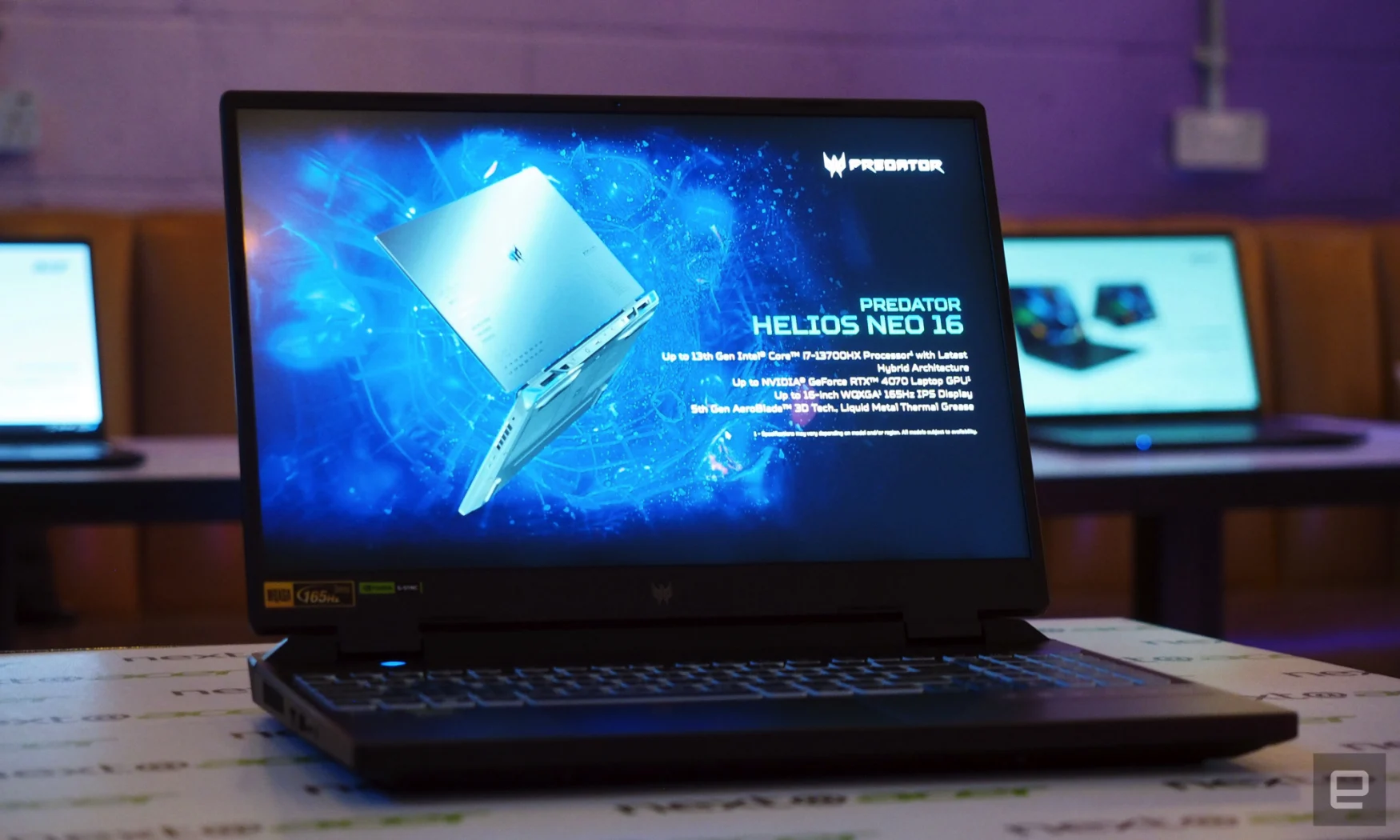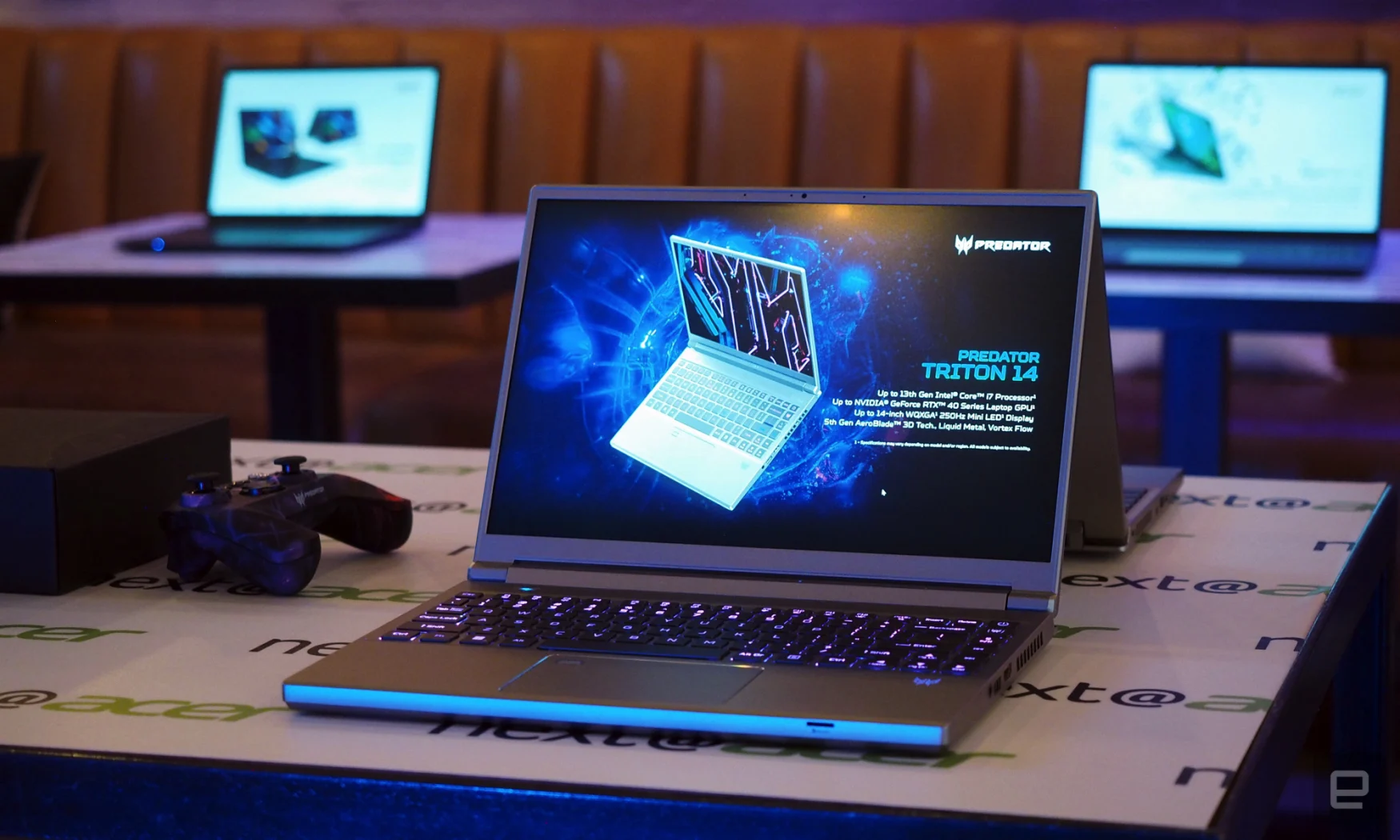
At the start of a new chip generation, manufacturers are forced to start the slow yet vital process of updating their existing hardware. Today, it’s Acer’s turn to show off a quartet of gaming units that, in the near future, will be permitted to run Intel and NVIDIA’s latest silicon. For instance, the range-topping Predator Triton 17 X, with its austere, Razor Book-esque design, is only available with NVIDIA’s RTX 4090 GPU and Intel’s Core i9-13900HX. You can pair those with up to 64GB RAM and anything up to 4TB of SSD storage, and if you’ve still got cash left over after all that, you can also snap up a version with a 250Hz mini-LED display with 1,000 nits peak brightness. Those antsy to get their hands on it will only need to wait until next month for it to arrive, with the base model priced at $3,799.

The Predator Helios Neo 16, meanwhile, can be specced with either a Core i5-13500HX or a Core i7-13700HX. You get three options on the GPU side, an RTX 4050 with 6GB RAM, or the pick of a 4060 or 4070, both of which come with 8GB of dedicated RAM. Further down the options list, you can choose up to 32GB RAM, up to 2TB of SSD storage and either a 1,920 x 1,200 or 2,560 x 1,600 IPS display with a 165Hz refresh rate. There’s a new chassis design on display here, and Acer says that its new heat pipe design will pull away between six and nine percent more heat than its immediate predecessor. That machine will land on these shores in May, with the base model price setting you back $1,199.

Those wanting a similarly outrageous amount of power in a smaller body, meanwhile, can turn to the Triton 14. That model is able to take up to a Core i7-13700H and the pick of an RTX 4050 with 6GB RAM or a 4070 with 8GB RAM. Much like the Neo 16, RAM tops out at 32GB, but you will get the option for a 2,560 x 1,600, 250Hz mini-LED display with a peak brightness of 600 nits. I’ll be honest, I’ve always had a soft spot for the throwback charms of some of Acer’s demure gaming laptops, and the Triton 14 has that in spades. Unfortunately, limited I/O and slightly less-than-you-might-expect-for-this-money material quality means I’m less enthused about this machine after seeing it up close and personal. You can already guess that this is debuting in the US in May, but you need to have at least $1,499 in your pocket before you can think about buying one.
And finally there’s the Predator Helios 3D 15 SpatialLabs Edition which you get no prizes for guessing comes with Acer’s glasses-free 3D display. This model can be ordered with Intel’s Core i9-13900HX, an RTX 4080 GPU and 32GB RAM when it makes its US bow in June for a minimum spend of $3,499. It’s worth saying any potential buyers of this model are well advised to check out my colleague Devindra Hardawar’s review of the Helios 300 SpatialLabs edition. He said the glasses-free display isn’t good enough to compensate for the headaches, or the compromised visual quality you get compared to other, better, gaming machines.
Author: Daniel Cooper
Source: Engadget



